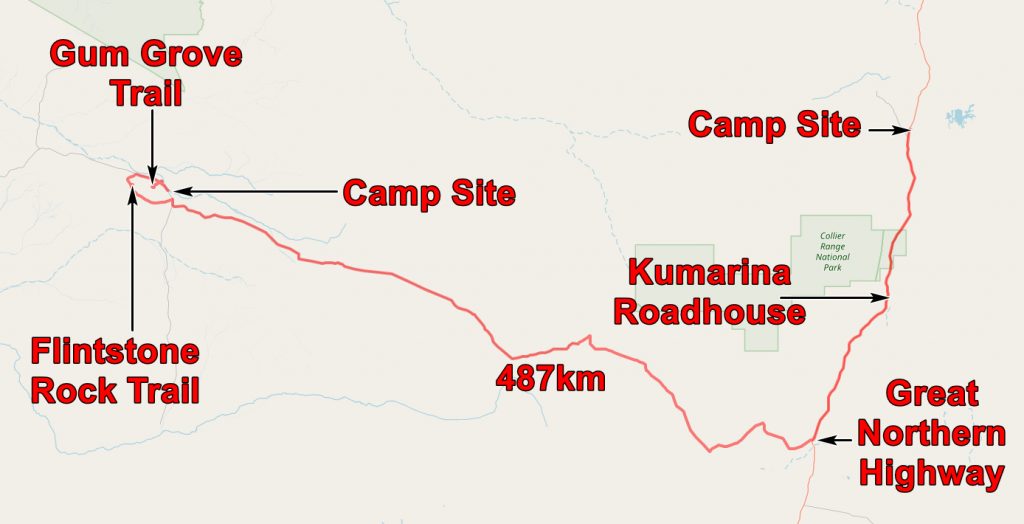Once more we were up shortly after dawn and, with the sun still low in the sky, took some photos of our camp.

Our camp at Mount Augustus in the early morning light
The camp had been surprisingly comfortable; John had set up his portable shower the night before and we had been able to get the dust out of places where it should not have been. Its amazing what you can do with a bucket of water heated on the fire, a little pump plugged into the cigarette lighter and a shower head attached to the far side of the truck. Comfort high, privacy zero, discretion very high! John had found that he had a flat tyre and we managed to change it for his spare, but he would need to get it fixed before too much longer. We returned to the caravan park where we filled up with fuel and water then headed into the Mount Augustus National Park and had a short walk along the Gum Grove Trail. Mount Augustus is an anticline of Proterozoic sediments overlying older granites and metamorphics. You can get the geological map of the area HERE.

A white gum on the Gum Grove Trail
But we had a long way to go and we wanted to see the Aboriginal Art on the other side of Mount Augustus, so it was soon back to the trucks and round the mountain. The Aboriginal Art is found on the Flintstone Rock Walk and is not far from the car park. This may be of some significance.

Most of the art at this site is underneath the large flat stone in the centre of the picture.
In the bush Aboriginal Art is not, in the main, easily accessible. The artists drew where they wanted, with no regard for the convenience of subsequent visitors. So to view the work some sacrifice of dignity can be required.

John and Julie suffer for art.
But our travelling art experts were not impressed by the art under the rock. The art is in the form of pictoglyphs – tapping with smaller rocks to get through the desert varnish and make your mark – and they thought that they were not of high quality and were rather modern. Pictoglyphs are not difficult to make and anyone can have a go at this unsupervised site, so perhaps the art has been “improved” over the years.

Undistinguished Aboriginal Art at the Flinstone Rock, Mount Augustus National Park.
But not far away John found some pictoglyphs which looked older and more assured in execution. Unfortunately my picture is rather poor but here it is.

A badly photographed example of “better” Aboriginal Art. Flintstone Rock, Mount Augustus National Park.

We then set off on a long drive on empty dirt roads towards the Great Northern Highway and the road to Newman. There is not a great deal to be said about this. The roads were surprisingly good although an unexpected corner could cause concern if you tried to brake as you went round it! Other traffic was not a concern – we saw about three other vehicles in hours of driving. However we did see a group of three cyclists resting at the side of the road. I did not envy them. We eventually reached the bitumen of the Great Northern Highway and headed north. We paused at Kumarina Roadhouse, which is a great favourite with truckers but we decided that wild camping was better. We stopped 50 miles south of Newman, out of sight of the Highway but, unfortunately within earshot of it. There is not a lot of traffic on the road by British standards but the occasional road train can make a lot of noise!

The application below shows you various .kmz files. If you open them with Google Earth you will get our route and the photographs I took, at the spot I took them, displayed in all their glory! Download the file you want, store it somewhere on your computer, open Google Earth and open the file.
If you don’t have Google Earth you can get it HERE.
[slickr-flickr tag=”13-08-13″]